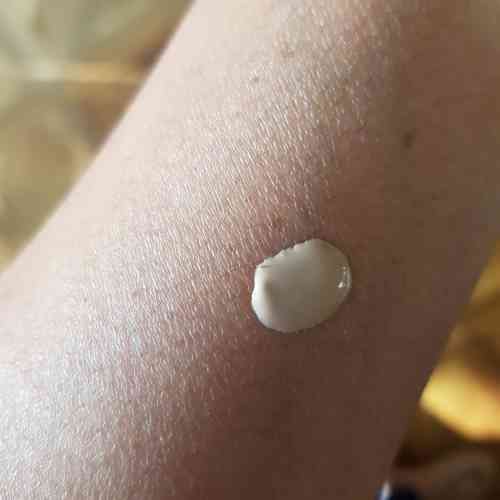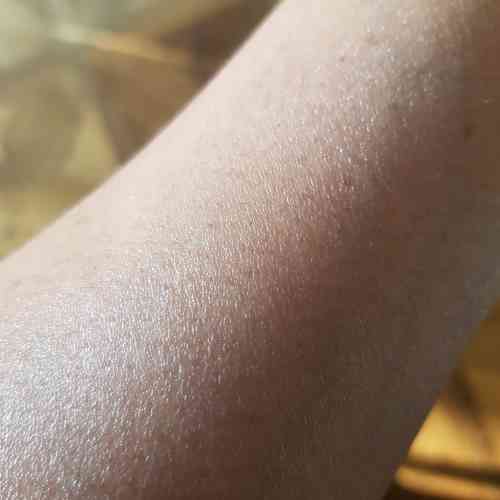I am writing this product review a fortnight earlier than I had anticipated, as I am expecting to use 1.5 tubes of this product per month. In other words, I need to allocate US$ 100/month on this sunscreen alone.
Ordinarily, I would stop writing and berate the manufacturer for what feels like daylight robbery. Unfortunately, I can’t because this product glides on like butter and blends in as if it were never there. The finish is matte and while the product is not drying, you do need to use a separate moisturiser


I cannot emphasise to you, how miraculous I find this product. Its UV filters are Titanium Dioxide and Zinc Oxide, and I fully expected the sunscreen to have some white cast and intolerable chalky smell. Alas, the product has no such fault. I feel as if I am cheating on Ultrasun because I love the look and feel of this sunscreen. As with all extra-marital affairs, the main problem with this product is this: the price to pay is unbearable.
Does this pass the HSD sunscreen test?
Yes.
The product is at least an SPF 30, has no parabens, BHT or Oxybenzone in the ingredient list, and its UV filters are Zinc Oxide and Titanium Dioxide.
Both Zinc Oxide and Titanium Dioxide have a long track record of safe use when topically applied. Both are photostable (do not breakdown in UV radiation) and are not absorbed into the skin. Even if de minimis penetration of (e.g.) Zinc Oxide occurs, there are no adverse health effects, given the high levels of endogenous Zinc already present in the body.
Out of the 12 permitted UV filters in the USA, the US FDA, considers only Zinc Oxide and Titanium Dioxide to be GRASE (Generally Regarded As Safe and Effective).
While both Zinc Oxide and Titanium Dioxide are broadspectrum filters, Titanium Dioxide is the better UVB filter and Zinc Oxide is the better UVA filter.
Why does Elizabeth Arden want you to pay US$ 68?
From what I can gather, the formula of the sunscreen has been updated to include Zinc Oxide and Titanium Dioxide as UV filters.
My working theory is that you are paying for the following:
- the look and feel of the product as well as its ease of use: I have physically tried over a hundred sunscreens, and very few sunscreens come this close experientially to being amazing. Even, Ultrasun does not spread and blend with such ease.
- prevage’s sunscreen is an oil-free formula, which would explain why I have had no issues with repeat use.
- Containing ingredients that are anti-oxidants, anti-pollution and a DNA enzyme complex
But first what damage is the product attempting to prevent?
The 50,000 feet view is that overexposure to UV radiation triggers the production of Reactive Oxygen Species (ROS) that can (and do) damage cellular proteins, lipids and DNA.
The function of anti-oxidants is to limit this damage by quenching ROS. Anti-oxidants that are endogenous to the skin (e.g.) glutathione will quench ROS. However, excessive ROS production can be countered by topically applied anti-oxidants.
One of the most studied anti-oxidants include Camellia Sinensis, Vitamin C, Vitamin E, reservatol etc.
In terms of DNA damage, UVA radiation is the main culprit, and our body does have a mechanism of DNA repair and studies show that externally administered DNA enzymes do work.
BUT…we are reliant on the manufacturer
Unlike the SPF number, there is no mechanism to know what percentage of anti-oxidants or DNA enzyme complex is present in this product.
We are entirely reliant on the manufacturer, and quite frankly, this has to be the least forthcoming brand I have encountered. They won’t even disclose the % of Titanium Dioxide and Zinc Oxide in their product let alone the percentage of anti-oxidants and more detail on how the DNA enzyme mechanism works.
And this is important because the single study that I did find indicates that commercial products can and do have insufficient anti-oxidants to be truly effective.
Would I buy this product again?
No. The price point is unacceptable for me. I am simply not going to spend over a US$ 1,200 / year on just sunscreen alone when there are cheaper options available in the marketplace. One of my pet hates is inexplicably expensive sunscreen. As an Indian, I mainly use sunscreen as an anti-ageing device, BUT sunscreens primarily play a significant role in reducing the incidence of skin cancer.
It is unacceptable for sunscreen to be this expensive.
Secondly, Zinc Oxide and Titanium Dioxide do not provide the best UVA protection in the marketplace: that’s a job that Avobenzone and new style broadspectrum filters play.
In the absence of information about the DNA enzyme complex and anti-oxidants, I feel no compulsion to use this sunscreen. I wish I could say the same thing about all my ex’s who live in Texas.
See also The Inkey List SPF 30 Daily Sunscreen, Neutrogena Sheer Zinc Dry Touch sunscreen
